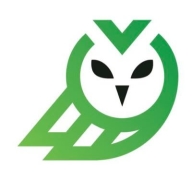

Grafana and meshIQ Platform are competitors in the data visualization and monitoring sector. Grafana holds an advantage in terms of ease-of-use and cost-effectiveness, while meshIQ is notable for its comprehensive features.
Features: Grafana offers flexible dashboards, real-time alerts, and integrates with various data sources, prioritizing usability and customization. meshIQ Platform includes real-time monitoring, event processing, and comprehensive analytics tailored for complex IT environments, catering to enterprise-level needs.
Ease of Deployment and Customer Service: Grafana features a straightforward setup and extensive documentation accessible to teams with different technical expertise, along with basic customer support and active forums. meshIQ Platform, while requiring more intricate deployment often needing specialist assistance, offers personalized customer service and dedicated support channels for complex environments.
Pricing and ROI: Grafana's competitive pricing and low setup cost make it appealing for budget-conscious teams, offering a freemium model for quick ROI. meshIQ Platform justifies higher initial costs with advanced features providing strong ROI for enterprises handling complex deployments.

Grafana is an open-source visualization and analytics platform that stands out in the field of monitoring solutions. Grafana is widely recognized for its powerful, easy-to-set-up dashboards and visualizations. Grafana supports integration with a wide array of data sources and tools, including Prometheus, InfluxDB, MySQL, Splunk, and Elasticsearch, enhancing its versatility. Grafana has open-source and cloud options; the open-source version is a good choice for organizations with the resources to manage their infrastructure and want more control over their deployment. The cloud service is a good choice if you want a fully managed solution that is easy to start with and scale.
A key strength of Grafana lies in its ability to explore, visualize, query, and alert on the collected data through operational dashboards. These dashboards are highly customizable and visually appealing, making them a valuable asset for data analysis, performance tracking, trend spotting, and detecting irregularities.
Grafana provides both an open-source solution with an active community and Grafana Cloud, a fully managed and composable observability offering that packages together metrics, logs, and traces with Grafana. The open-source version is licensed under the Affero General Public License version 3.0 (AGPLv3), being free and unlimited. Grafana Cloud and Grafana Enterprise are available for more advanced needs, catering to a wider range of organizational requirements. Grafana offers options for self-managed backend systems or fully managed services via Grafana Cloud. Grafana Cloud extends observability with a wide range of solutions for infrastructure monitoring, IRM, load testing, Kubernetes monitoring, continuous profiling, frontend observability, and more.
The Grafana users we interviewed generally appreciate Grafana's ability to connect with various data sources, its straightforward usability, and its integration capabilities, especially in developer-oriented environments. The platform is noted for its practical alert configurations, ticketing backend integration, and as a powerful tool for developing dashboards. However, some users find a learning curve in the initial setup and mention the need for time investment to customize and leverage Grafana effectively. There are also calls for clearer documentation and simplification of notification alert templates.
In summary, Grafana is a comprehensive solution for data visualization and monitoring, widely used across industries for its versatility, ease of use, and extensive integration options. It suits organizations seeking a customizable and scalable platform for visualizing time-series data from diverse sources. However, users should be prepared for some complexity in setup and customization and may need to invest time in learning and tailoring the system to their specific needs.
meshIQ is an advanced middleware observability and management platform tailored for complex IT environments. It empowers teams to efficiently manage hybrid, multi-middleware infrastructures, providing clarity and control for seamless modernization without disruption.
meshIQ offers comprehensive multi-middleware observability and specialized Kafka management. It supports seamless observability and control, whether dealing with legacy systems like IBM MQ or streaming technologies such as Apache Kafka. By ensuring uninterrupted transitions from legacy to modern platforms, it reduces downtime risks. meshIQ's unified interface consolidates performance insights, enabling real-time analytics and proactive monitoring to swiftly resolve issues and optimize operations.
What features define meshIQ?
What benefits and ROI should you expect?
meshIQ is implemented across industries to manage middleware landscapes that integrate legacy and modern systems like Apache Kafka. This adaptability allows industries to maintain resilience and optimize middleware for both current and future technological demands.
We monitor all Application Performance Monitoring (APM) and Observability reviews to prevent fraudulent reviews and keep review quality high. We do not post reviews by company employees or direct competitors. We validate each review for authenticity via cross-reference with LinkedIn, and personal follow-up with the reviewer when necessary.